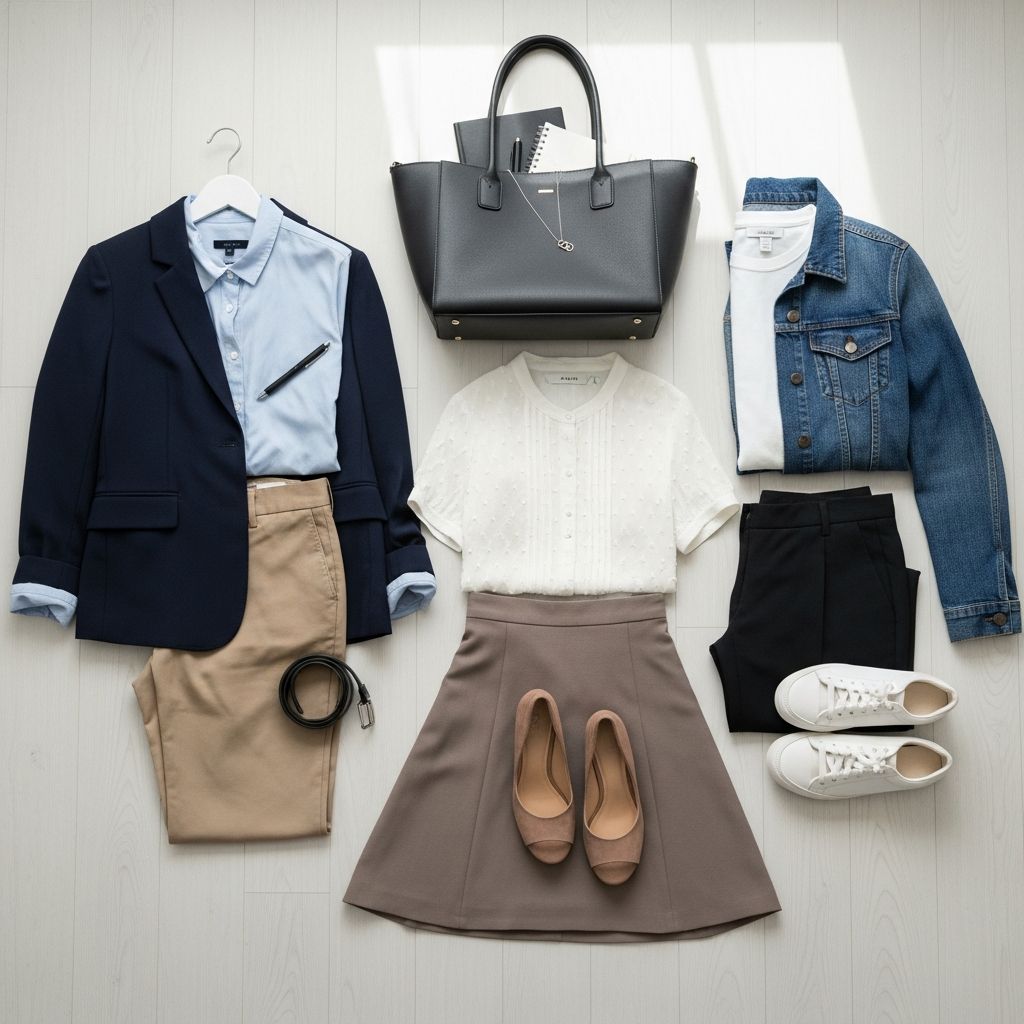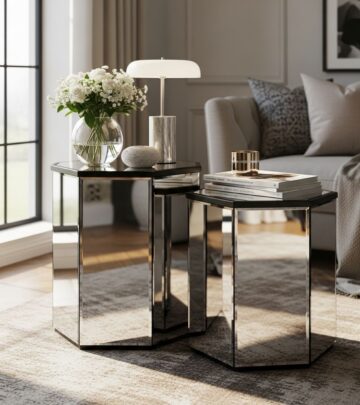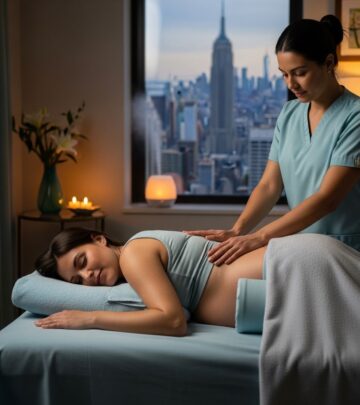Building Your Wardrobe for a Summer Internship: Professional, Versatile & Budget-Friendly
Expert guidance for building a stylish, functional summer internship wardrobe on any budget—balance formality, comfort, and personal style.

Building Your Wardrobe for a Summer Internship
Embarking on a summer internship is a pivotal moment for any aspiring professional. Whether you’re entering the legal field, finance, consulting, or another conservative sector, your attire will play a crucial role in shaping first impressions and fostering confidence. With careful planning and smart choices, you can create a powerful, versatile wardrobe—without overspending or sacrificing style. This comprehensive guide will walk you through every step: what to wear, how much to buy, budgeting strategies, key pieces, and tips for navigating summer’s unique fashion challenges.
Contents
- Why the Right Internship Wardrobe Matters
- Essential Pieces for a Summer Internship Wardrobe
- How Many Suits? (And Why You Don’t Need 10)
- Tops, Layers, and What Goes Underneath
- Pants, Skirts, and Dresses—Choosing Staple Bottoms
- Budgeting: Quality vs. Quantity
- What Not to Wear: Avoiding Common Intern Mistakes
- Summer Style Strategies: Fabric, Fit, and Comfort
- Accessories and Footwear: Final Touches
- Frequently Asked Questions
Why the Right Internship Wardrobe Matters
In professional environments, appearance conveys diligence, respect, and an understanding of workplace expectations. Dressing appropriately as an intern signals that you are attuned to company culture, ready to represent the firm, and take your responsibilities seriously. Moreover, an intentional wardrobe saves time and stress—letting you focus on your work instead of daily outfit dilemmas.
Essential Pieces for a Summer Internship Wardrobe
The foundation of a work wardrobe should be versatile, neutral, and well-fitting pieces that easily mix and match. Prioritize quality and fit over quantity: a streamlined, cohesive capsule will outlast fleeting fashion trends. Here’s an expert-recommended checklist:
- 3–5 suits (jacket + skirt/pants/dress, in black, navy, or gray)
- 2–3 pairs of tailored trousers in neutral colors
- At least one pencil skirt (or slightly flared) in a classic shade
- 5–10 work-appropriate tops in flattering, professional colors
- One fitted, office-ready blazer (preferably in stretch cotton or jersey)
- Professional, closed-toe shoes suitable for walking and standing
- Minimal, timeless accessories—think simple jewelry and practical bags
How Many Suits? (And Why You Don’t Need 10)
A common misconception is that a summer intern needs an overflowing wardrobe of suits. In reality, interns rarely require more than three to five basic suits. These should be reserved for days when meeting with senior staff, partners, clients, or important visitors. If possible, keep an extra suit at the office for unplanned meetings. Choose suits made of breathable, seasonless fabric for modular mixing—and ensure the jacket coordinates with at least two bottoms (pants and skirt, or a dress).
| Number of Suits | Why |
|---|---|
| 1–2 | Still acceptable, if you have reliable dry cleaning & can remix pieces creatively. |
| 3–5 | Optimal for rotation, coverage during business/formal days, and emergencies. |
| >5 | Rarely necessary and not cost-effective for a short internship. |
Pro Tip: Buy suit separates (jacket, skirt, pants, possibly a sheath dress) in matching fabric. This exponentially increases your outfit combinations and extends the wardrobe’s longevity.
Tops, Layers, and What Goes Underneath
Tops are where you can introduce a touch of personality through color and subtle prints—but keep the look sharp, modest, and professional. Aim for 5–10 blouses, shells, or knits that complement your core suit colors. Avoid transparent fabrics and deep necklines. For best value, purchase tops in colors that work well with your suits—e.g., cool colors if your basics are black and gray.
- Mix high necklines with classic shapes for versatility.
- Choose light, breathable fabrics that resist wrinkling (silk blends, viscose, light cotton).
- Layer with a fitted black blazer or cardigan at the office—especially important in air-conditioned spaces.
- Keep camisoles or shells handy to wear under sheer blouses or low-cut tops.
Always avoid bare shoulders when walking in hallways or common areas; cover up with a jacket or sweater even if your desk location feels informal.
Pants, Skirts, and Dresses—Choosing Staple Bottoms
Nothing undermines professionalism faster than ill-fitting pants or skirts. Invest time in finding a great fit—tailoring is often worth the extra expense! Select staple bottoms in durable, neutral shades for maximal coordination.
- 2–3 pairs of tailored trousers (avoid extremes of tightness or looseness)
- At least one classic pencil skirt (try black, navy, or gray for easy pairing)
- Pleated or slightly flared skirts are acceptable if you prefer more movement or coverage
- Optionally, a sheath or shift dress in a neutral tone—layer with your blazer for an instant suit effect
Recommended brands for professional yet affordable separates:
- J.Crew, Ann Taylor, Banana Republic Factory (especially the AirStretch and washable lines)
- M.M.LaFleur, Nic + Zoe, Uniqlo (for elevated basics)
- Theory, Calvin Klein, Black Halo (for classic skirts and dresses)
Readers also suggest slip shorts or light undergarments for comfort—especially with bare legs in warm weather.
Budgeting: Quality vs. Quantity
You can build a solid summer internship wardrobe on almost any budget if you focus on multi-purpose staples. Here’s how:
- Invest most in what you’ll wear most—i.e., a neutral suit, a blazer, and two pairs of trousers.
- Affordable stores (Gap, Old Navy, Target, H&M) offer basics that can be tailored for a better fit.
- Limit trendy pieces and statement items; instead, stick to timeless, re-wearable pieces.
- Shirts in a similar palette to your main suits allow for easy mixing and matching.
- If money’s tight, buy fewer but better items, and expand your wardrobe gradually.
Don’t worry if your outfits seem basic compared to wealthier colleagues—hiring managers prize appropriateness and neatness over fashion-forward looks. If needed, ask about your office’s dress code before investing, or wait to see what others wear during your first week.
What Not to Wear: Avoiding Common Intern Mistakes
- Steer clear of ill-fitting, revealing, or casual clothes: mini-skirts, shorts, ripped denim, tank tops, and too-tight trousers have no place in a conservative office.
- Leave flashy, ultra-expensive designer pieces (e.g., $9,000 bags) at home, especially if they suggest you’re out of touch with entry-level culture.
- Skip open-toed shoes unless explicitly permitted; if worn, maintain a clean pedicure and opt for more formal styles (peep-toe or elegant wedges only).
- Avoid gym wear, flip-flops, beachy sandals, and rhinestone-studded heels.
- Never try to “make” a suit by pairing mismatched blacks—it looks unprofessional in most lighting.
Remember: It’s better to err on the side of formality as an intern. You can always relax your style once you observe office norms.
Summer Style Strategies: Fabric, Fit, and Comfort
- Lightweight Fabrics: Opt for cotton, silk blends, or other breathable materials that resist sweat and wrinkling.
- Pantiliner Trick: Use inexpensive, disposable pantiliners as underarm guards inside blazers to reduce sweat stains and dry cleaning bills.
- Layer Strategically: Keep blazers/cardigans at your desk for temperature swings between outdoors and air-conditioned offices.
- Undergarments: Wear wicking (synthetic) underwear for all-day comfort; cotton tends to hold moisture, which is less desirable on humid days.
- Dresses & Skirts: Choose silhouettes that keep you cool but don’t sacrifice professionalism. Hemlines should always fall within a few inches of the knee.
- No Bare Shoulders: Even sleeveless blouses should be covered when walking around the office.
Finally, dry clean suits only as needed (every 4–5 wearings unless soiled), and never skip pressing—rumpled attire instantly detracts from a polished look.
Accessories and Footwear: Final Touches
Accessories should be minimal, functional, and matched to the formality of your role.
- Handbags: A classic, structured satchel or tote (black, navy, beige) conveys seriousness—avoid carrying designer bags that overshadow your image as an intern.
- Jewelry: Simple studs, a thin chain, or a small watch complete the look; leave bold or distracting statement jewelry at home.
- Shoes: Professional, closed-toe flats or moderate-height pumps are safest. A clean, neutral peep-toe may sometimes be acceptable in hot climates. Always keep shoes in good repair.
- Belts and Hosiery: Opt for understated leather belts. Hose or tights are optional in many offices but check the dress code—sometimes bare legs are discouraged even in summer.
Keep a discreet “emergency kit” in your bag (lint roller, stain stick, spare pair of hose or socks, safety pins) to handle any mid-day mishaps.
Frequently Asked Questions (FAQs)
Q: Is it ever okay to go sleeveless as an intern?
A: Only at your personal desk or in informal settings—always cover up with a blazer or cardigan when walking around or attending meetings.
Q: How do I pick shoes that are appropriate but won’t hurt my feet?
A: Look for professional flats or low-block heels with cushioned insoles. Break them in before day one, and keep backup shoes at the office if possible.
Q: Should I invest in a very expensive bag to fit in?
A: No—excessively expensive or trendy bags may draw the wrong kind of attention. Opt for classic, mid-priced satchels or totes appropriate for your intern status.
Q: How can I save money while building my wardrobe?
A: Focus your budget on one high-quality suit and essential separates, then supplement with affordable basics. Shop out-of-season sales, consider secondhand or consignment stores, and don’t hesitate to tailor inexpensive finds for a perfect fit.
Q: What if I get stains on my suit during the day?
A: Keep stain remover wipes or pens handy. If the stain is significant and you have a backup jacket, change as soon as possible. For minor issues, try to keep a scarf or cardigan handy to discreetly cover small spots until you reach a cleaner.
Additional Tips for International or Traveling Interns
- Check the workplace dress code before packing—expect standards to vary dramatically across countries.
- Choose wrinkle-resistant and easy-care fabrics if you’ll be traveling frequently.
- Pack a wardrobe capsule (a few interchangeable pieces) rather than many outfits—this saves space and maximizes versatility.
Final Thoughts: Building Confidence and Professionalism
Creating a summer internship wardrobe doesn’t have to be overwhelming or expensive. With the right foundation—neutral suits, classic separates, and subdued accessories—you’ll project confidence and professionalism from day one. Stay open to observing your company’s culture, prioritize comfort and appropriateness, and above all, remember that your work will ultimately speak louder than your wardrobe. Dress to fit in, to stand out for the right reasons, and to feel ready to tackle every opportunity your internship presents.
References
- https://corporette.com/summer-associate-style/
- https://corporette.com/building-your-wardrobe-for-the-summer-internship/
- https://corporette.com/summer-work-clothes/
- https://corporette.com/how-to-build-a-work-wardrobe/
- https://corporette.com/what-not-to-wear-as-an-intern-or-summer-associate/
- https://corporette.com/what-workwear-mistakes-should-interns-avoid/
- https://corporette.com/the-minimalists-guide-to-dressing-for-work/
- https://corporette.com/work-wardrobe-stages/
- https://corporette.com/modernizing-your-work-wardrobe-need-to-edit-more/












